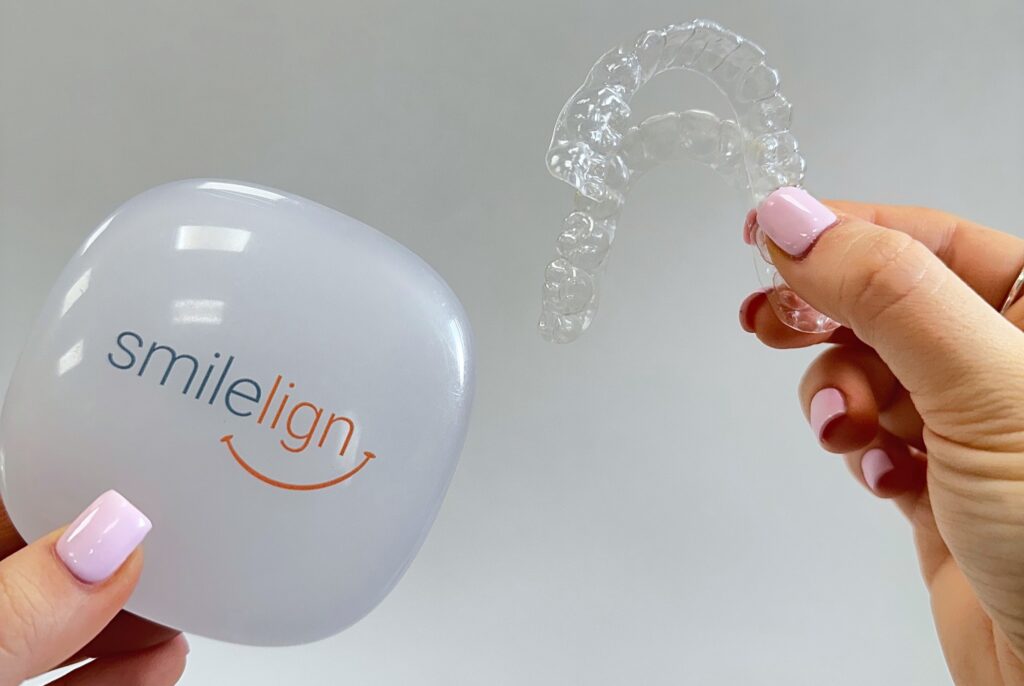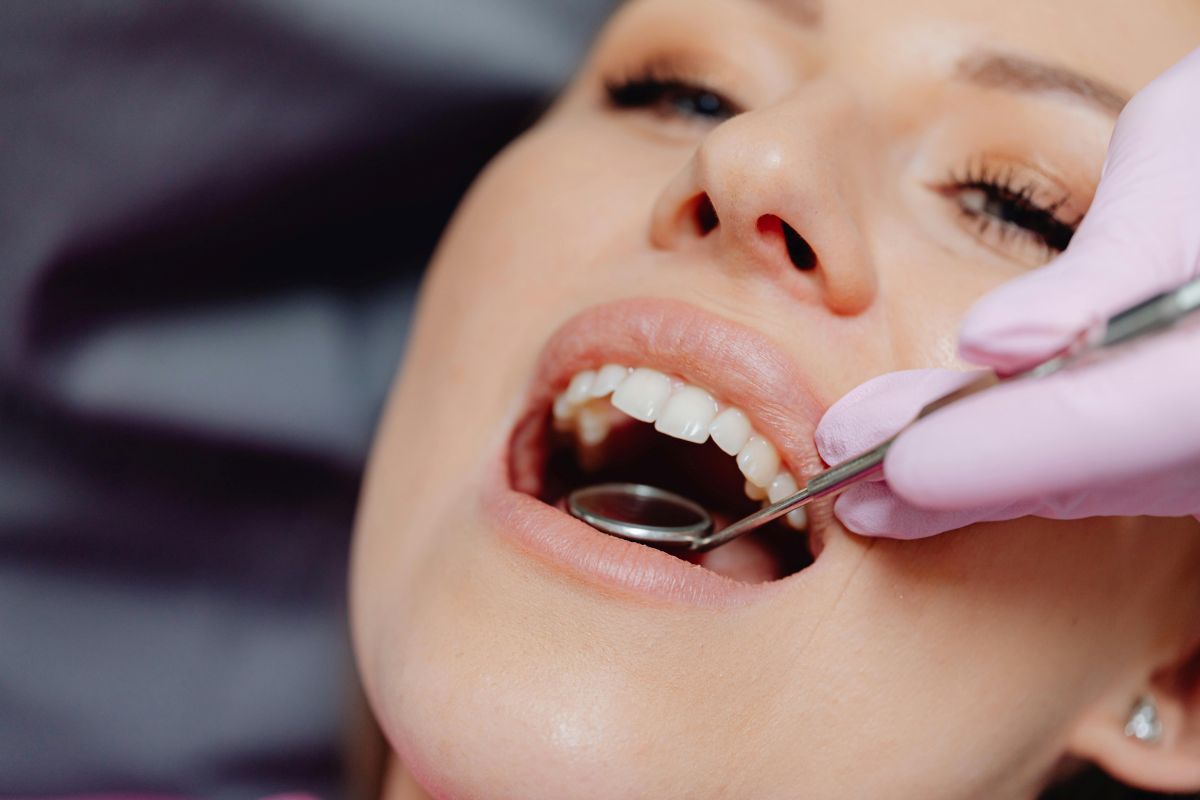Have you noticed your teeth moving or starting to feel a little different than they used to?
Maybe a small gap has opened up, or your front teeth feel more crowded than they used to. It can be frustrating, especially if you’ve never had issues before.
The truth is, tooth movement in adulthood is incredibly common. It can happen gradually or quite suddenly, and there are a few different reasons behind it. Some are part of the natural ageing process, while others might need more attention.
If something doesn’t feel quite right, you’re most likely not imagining it.
Keep reading to find out why your teeth might be on the move and what your options are if you’d like to do something about it.
Signs to watch out for
It can be tricky to notice these changes at first because they happen gradually. But being aware of common signs can help you catch tooth movement early, before it causes more noticeable problems.
- Mild crowding or overlapping of front teeth
- Teeth tilting or rotating slightly
- Food getting caught where it didn’t before
- A subtle change in your bite
Natural aging & everyday wear
Even if you’ve always had straight teeth, changes can sneak in with age.
Teeth aren’t permanently fixed in place — they’re held in position by ligaments and bone, both of which change as we get older.
Everyday chewing, shifts in your jaw, and muscle tension all play a part. If you’ve lost a tooth or have some gum recession, the supporting bone may thin, making teeth easier to move, especially at the front.
This might be caused by:
- The bone that supports your teeth becoming thinner or weaker
- Natural wear on your teeth changing the way they meet
- Gum recession that makes teeth feel less stable
- Ligaments loosening around the roots
You might not notice anything for years, then one day spot a tooth that’s no longer quite where it used to be.

Missing teeth and untreated gaps
If you’ve had a tooth removed and didn’t replace it, it’s worth keeping a close eye on the surrounding area.
Your teeth naturally lean on each other for support, so when one is missing, it’s like taking a brick out of a wall — things begin to shift.
This often causes:
- Teeth next to the gap tipping inward
- Opposing teeth moving up or down to fill the space
- New gaps forming or crowding in other areas
These changes don’t just affect how your teeth look, they can also make chewing harder and put extra strain on your jaw.
Over time, this might lead to bite problems, causing discomfort or clicking in your jaw joints.
Grinding or clenching (bruxism)
Bruxism (the habit of clenching or grinding your teeth) is another common culprit behind tooth movement.
You might not even realise you’re doing it, especially if it happens at night. Over time, the constant pressure can wear down enamel and gradually push teeth out of alignment.
Signs of bruxism include:
- Waking up with a sore jaw or tension headaches
- Teeth that look flatter or shorter than they used to
- Small chips or cracks
- Tooth sensitivity or tightness
Even habits like biting your nails or chewing pens can exert enough force to cause slow changes, particularly in the front teeth.

Orthodontic relapse
If you had braces or aligners in the past, there’s always a chance your teeth can start shifting again, especially if you no longer wear your retainers.
Retainers are designed to hold teeth in their new position while the surrounding bone and ligaments stabilise.
Without them, teeth can drift back towards their original position, sometimes subtly, sometimes noticeably.
If you’ve stopped wearing your retainer or lost it altogether, it might be time to have things reassessed.
What you can do about moving teeth
If you’ve spotted signs of movement, don’t panic. Teeth can shift for a variety of reasons, and in many cases, it’s completely manageable with the right approach.
If the changes are very minor and not causing any discomfort, your dentist may recommend simply keeping an eye on things during your regular check-ups.
However, here are some things they might suggest to prevent your teeth from moving further:
New retainers
If you’ve not been wearing your retainers regularly, your teeth may have shifted enough that it no longer fits. In this case, you’ll likely need a new one made to fit your current tooth position.
Replacing missing teeth
Filling gaps with a bridge, implant, or denture restores balance can help stop surrounding teeth from drifting.
Managing bruxism
If bruxism is a factor, your dentist might recommend a night-time splint to reduce pressure on your teeth and help protect them from further damage.
Orthodontic treatment
If your teeth have noticeably shifted and you’d like them corrected, orthodontic treatment such as braces or clear aligners can achieve this.
Clear aligners: A discreet way to straighten teeth
Clear aligners are increasingly popular among adults who want to address minor crowding, spacing, or relapse without the visibility of traditional braces.
They’re discreet, removable, and designed to gently guide your teeth into the right position over time.
Because they’re custom-made for your teeth, aligners are also a comfortable solution with minimal disruption to daily life.
You can eat and drink as normal, and cleaning is simple.

Why Smilelign?
Smilelign is a UK-based clear aligner system available through dental practices.
Every case begins with a scan or impressions taken by your dentist, which is used to map out your bespoke treatment plan.
What sets Smilelign apart is our focus on strength, speed, and patient support. Each aligner is made from premium, 0.8mm material that’s up to three times stronger than standard aligners, meaning fewer breaks, greater comfort, and more movement per aligner.
You’ll also benefit from:
- An easy-to-use Smilelign app to track progress
- Optional pre-aligners to check suitability before starting
- A luxury patient starter kit with cleaning spray, mirror, and balm
Treatment is carried out under the supervision of your dentist, and the process is designed to be efficient, predictable, and discreet.
Whether your teeth have shifted slightly or more significantly, Smilelign could be the step that gets them back where they belong.
Interested?
If you’re worried about shifting teeth or simply want them back to how they used to be, you don’t have to figure it out alone.
Find your nearest Smilelign provider today and take the first step towards feeling confident in your teeth again!




